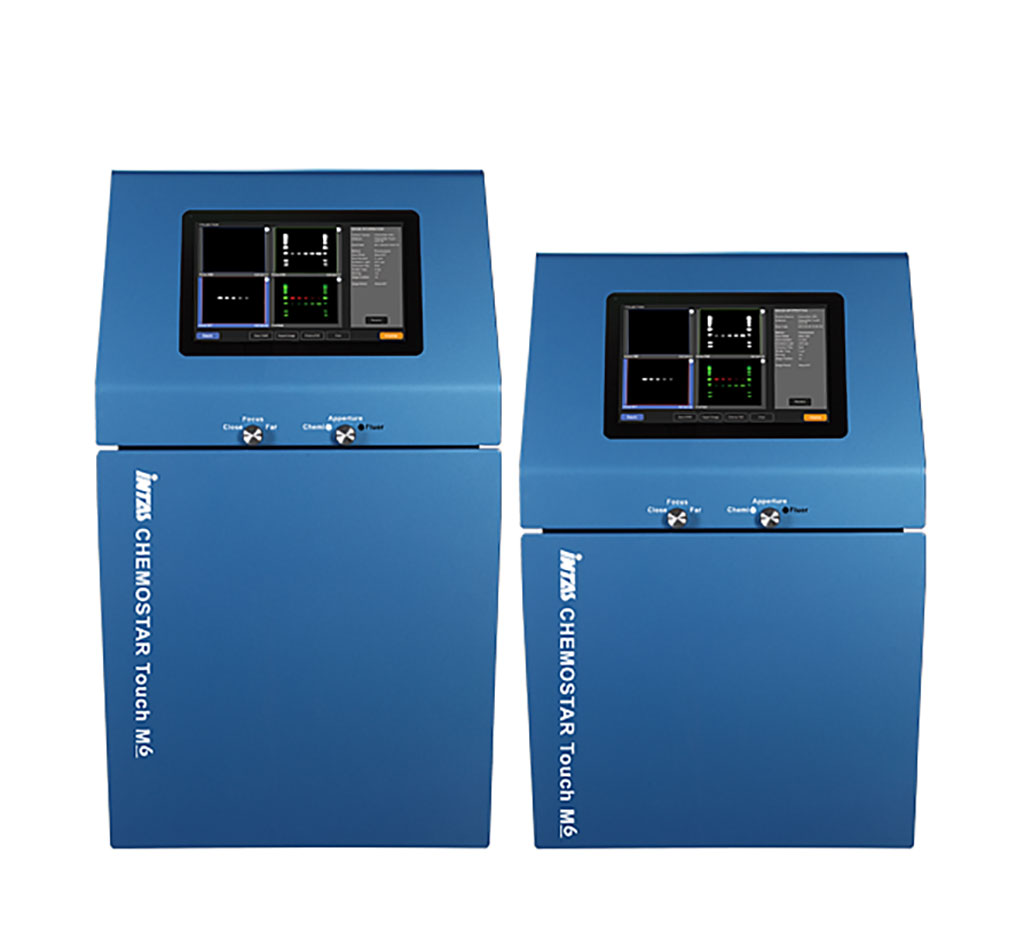Non‐Invasive Urine Markers Differentiate Renal Cancer from Oncocytoma
By LabMedica International staff writers
Posted on 25 May 2021
Clear cell renal cell carcinoma, (ccRCC), is a type of kidney cancer. Clear cell renal cell carcinoma is also called conventional renal cell carcinoma. Clear cell renal cell carcinoma is named after how the tumor looks under the microscope.Posted on 25 May 2021
Renal oncocytoma is a benign (noncancerous) growth of the kidney. They generally do not cause any signs or symptoms and are often discovered incidentally while a person is undergoing diagnostic imaging for other conditions. Some people with renal oncocytoma will have abdominal or flank pain; blood in the urine; and/or an abdominal mass.

Image: The CHEMOSTAR Touch ECL & Fluorescence Imager (Photo courtesy of INTAS)
Urologists at the University Hospital Cologne (Cologne, Germany) have shown that that Vim3 is overexpressed in tissue samples of renal oncocytomas and Mxi‐2 in clear cell renal carcinoma (ccRCC). They collected urine samples from patients suspected of kidney cancer between 2015 and 2018. The final cohort consisted of 350 patients, with pathohistological proof of an oncocytoma in 20 patients or a RCC (50 chromophobe; 40 papillary); 200 clear cell RCC (ccRCC), as well as 40 negative controls.
The medical scientists performed Western blots on urine samples which were analyzed with INTAS Chemostar (Göttingen, Germany). ELISAs were performed using incubated 3B4 Vimentin antibody and for Mxi‐2 and analyzed on the FLUOstar Omega plate reader (BMG LABTECH, Ortenberg, Germany). The team also carried out lateral flow assays; and quantitative real‐time polymerase chain reaction (qRT‐PCR).
The investigators reported that there was a significant increase of Vim3 in urines from patients with oncocytoma and was detectable with ELISA compared to all other subtypes of RCCs. Mxi‐2 was predominantly overexpressed in ccRCCs. Lateral flow assay of Vim3 and Mxi‐2 shows two bands in the case of oncocytoma and ccRCC indicating the specificity of this test. For small renal masses (SRMs), an overexpression of miR‐15a/Mxi2 was detectable in urine samples from ccRCC and chromoRCC patients. In contrast to that, miR‐498/Vim3 were predominantly overexpressed in oncocytoma patients.
The authors concluded that using the highly specific, non‐invasive urine markers, Vim3 and Mxi‐2, they were able to fill the gap and reduce the number of overtreated patients as well as the number of unnecessary surgeries. Furthermore, even the detection as well as pre‐surgical differentiation in small kidney cancers is possible with the measurement of the two predicted miRs as well as the proteins. Both proteins (Vim3 and Mxi‐2) were detectable in patients’ urines and can be used for the non‐invasive differentiation of kidney cancers. The study was published on May 7, 2021 in the Journal of Clinical Laboratory Analysis.
Related Links:
University Hospital Cologne
INTAS
BMG LABTECH













